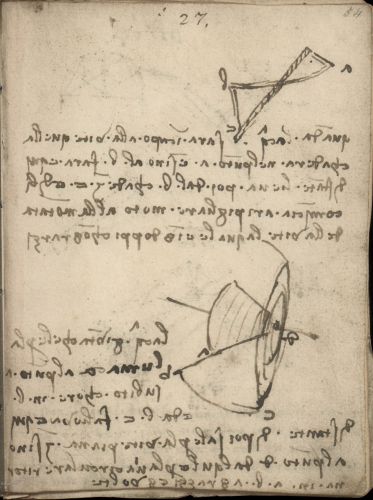Error
Studies of perpetual engines based on the Archimedean screw
During the 1490s, Leonardo deepened his knowledge of the main ancient and medieval works of mechanics and geometry, such as Euclid’s Elements and Jordanus Nemorarius’ De ponderibus. In this period, his studies on “perpetual machines” became more and more speculative and seemed to move away from the physical dimension of the operating machine to concentrate instead, particularly in the very common case of wheels, on the mechanical elements that should have generated the disruption of equilibrium needed to cause their rotation. It was as if he had realized that, before being approached from an engineering point of view, the problem of perpetual motion had to be solved on a conceptual level. Relevant in this regard are the studies on the Archimedean screw in Codex Forster I (folios 41v, 43v, 45v, 46r, 52r, 54r), in which he tries to add to the screw pipes and coils of larger diameter so that, once raised, the water moves into the outer channels creating the necessary unbalancing in the system to turn the entire machine. In folio 54r Leonardo presents the basic module of this “hydraulic lever,” which can be implemented by increasing the number of “principles” (i.e. the number of coils) of the central screw: the idea was to integrate several elements on the same axis, so as to compound the actions of each individual lever.


